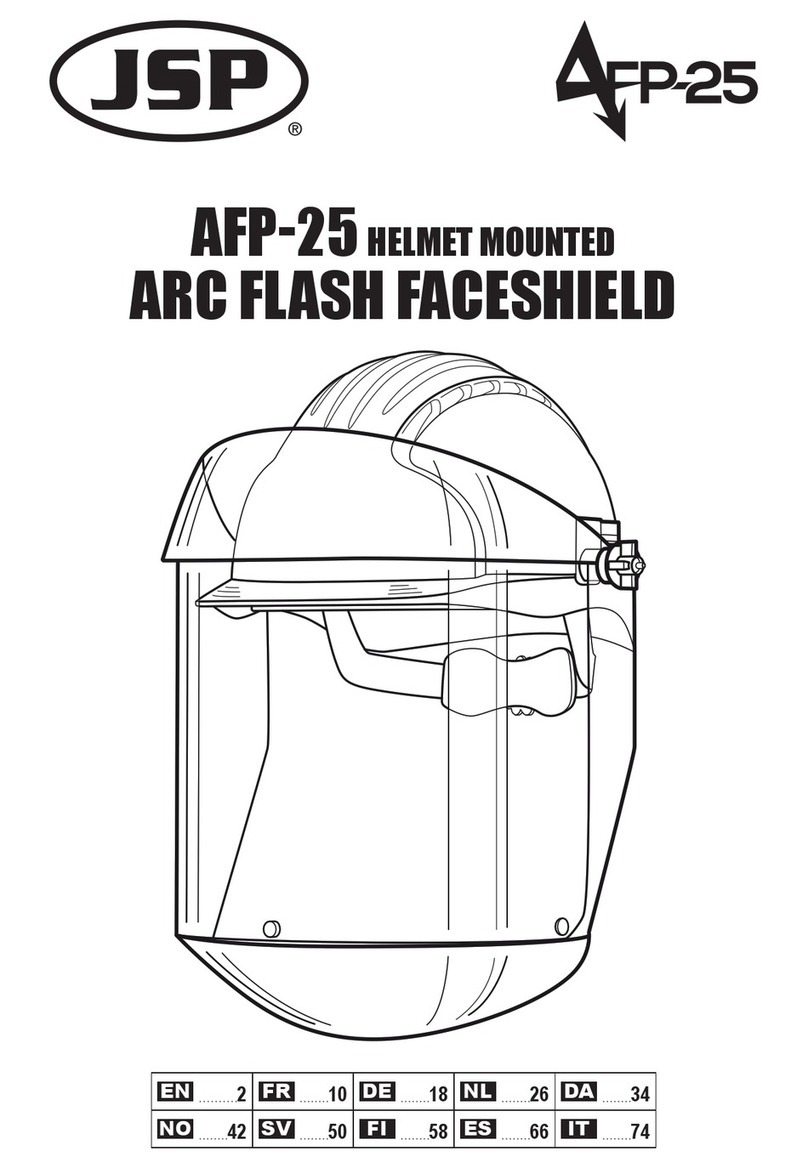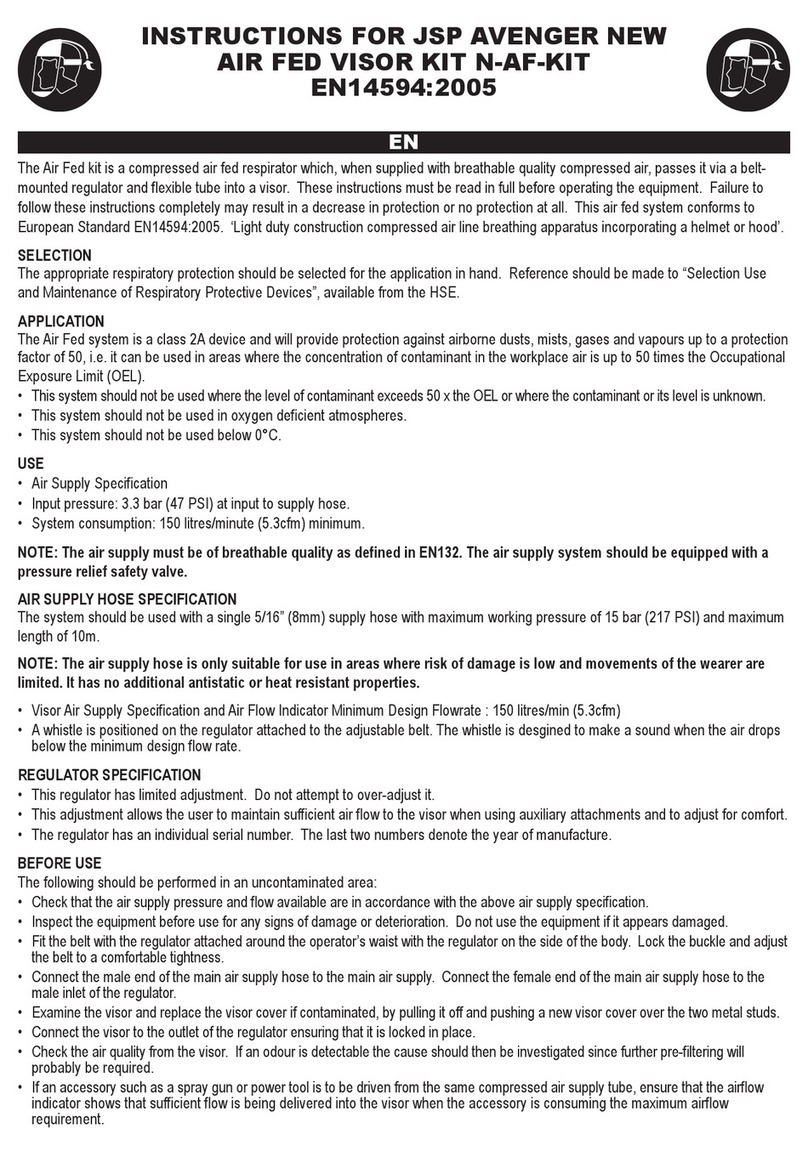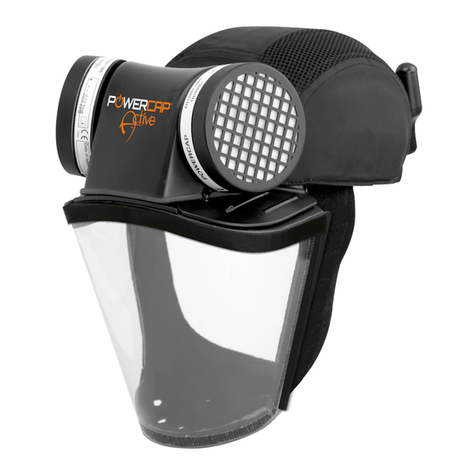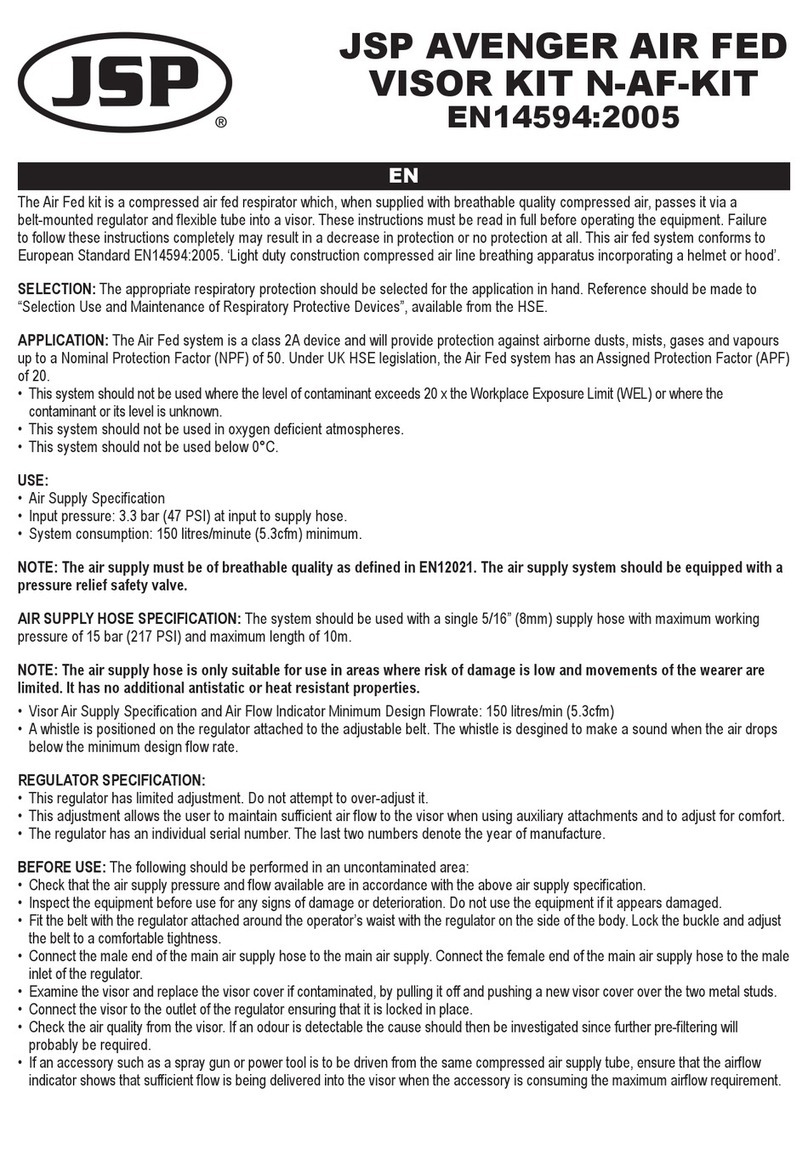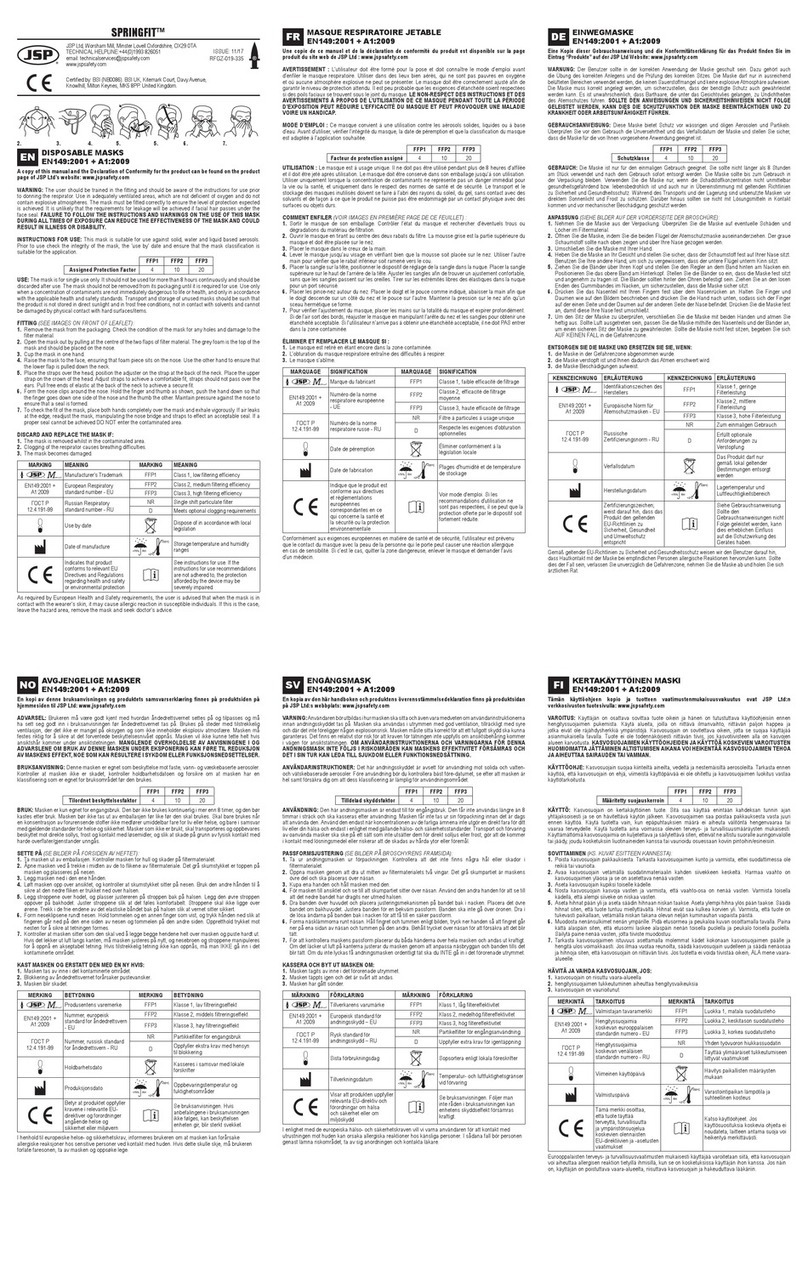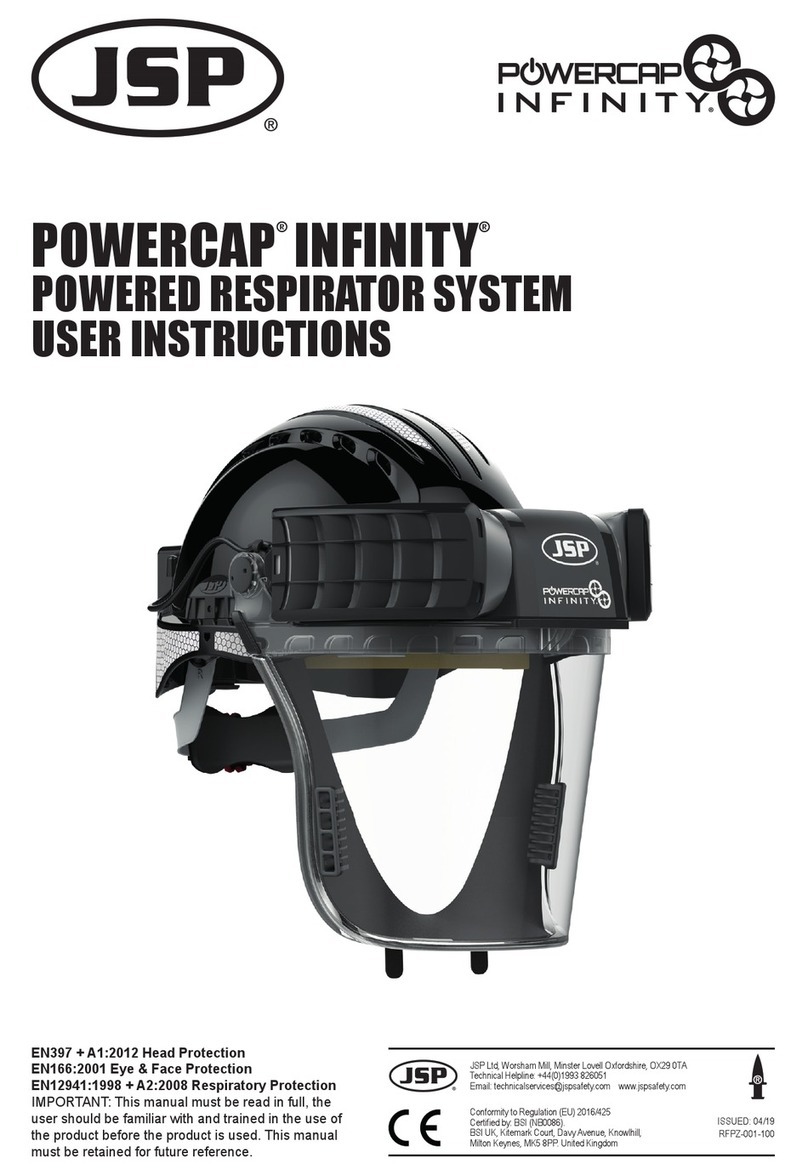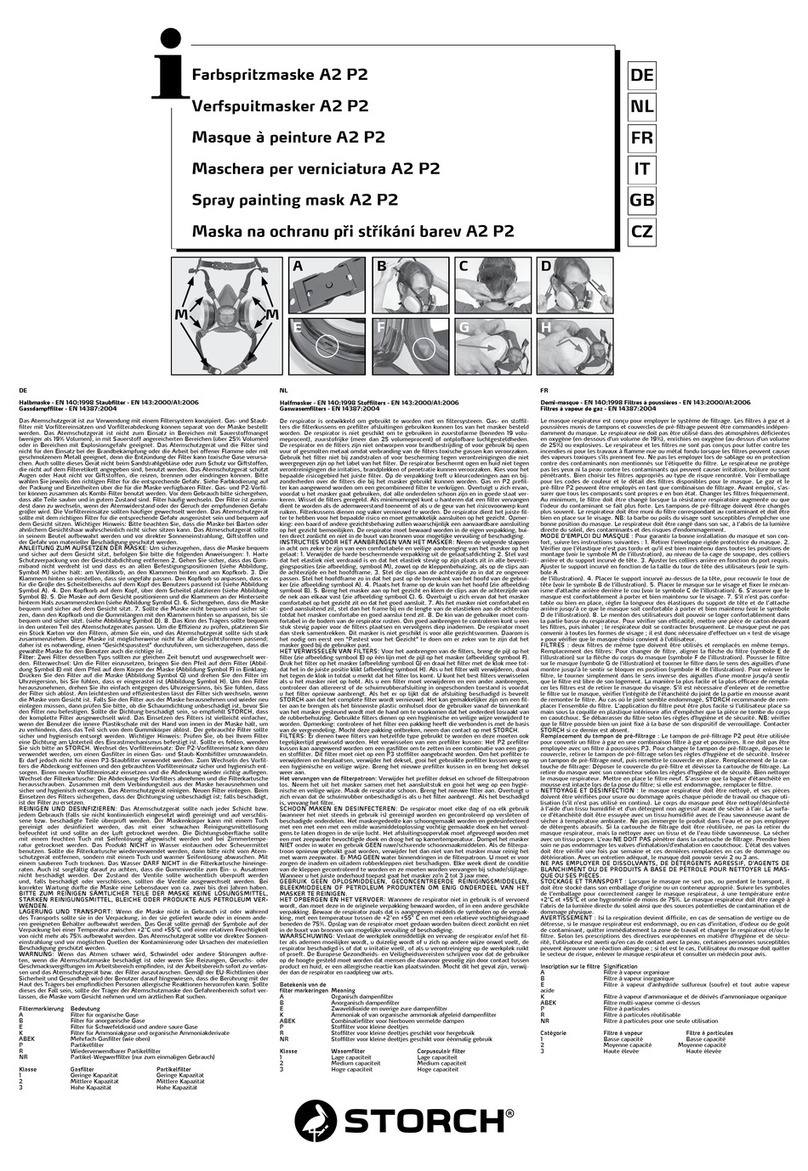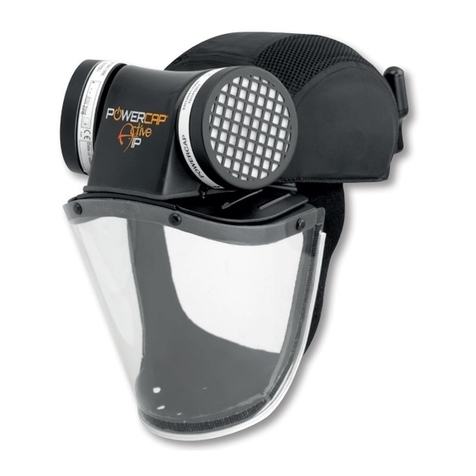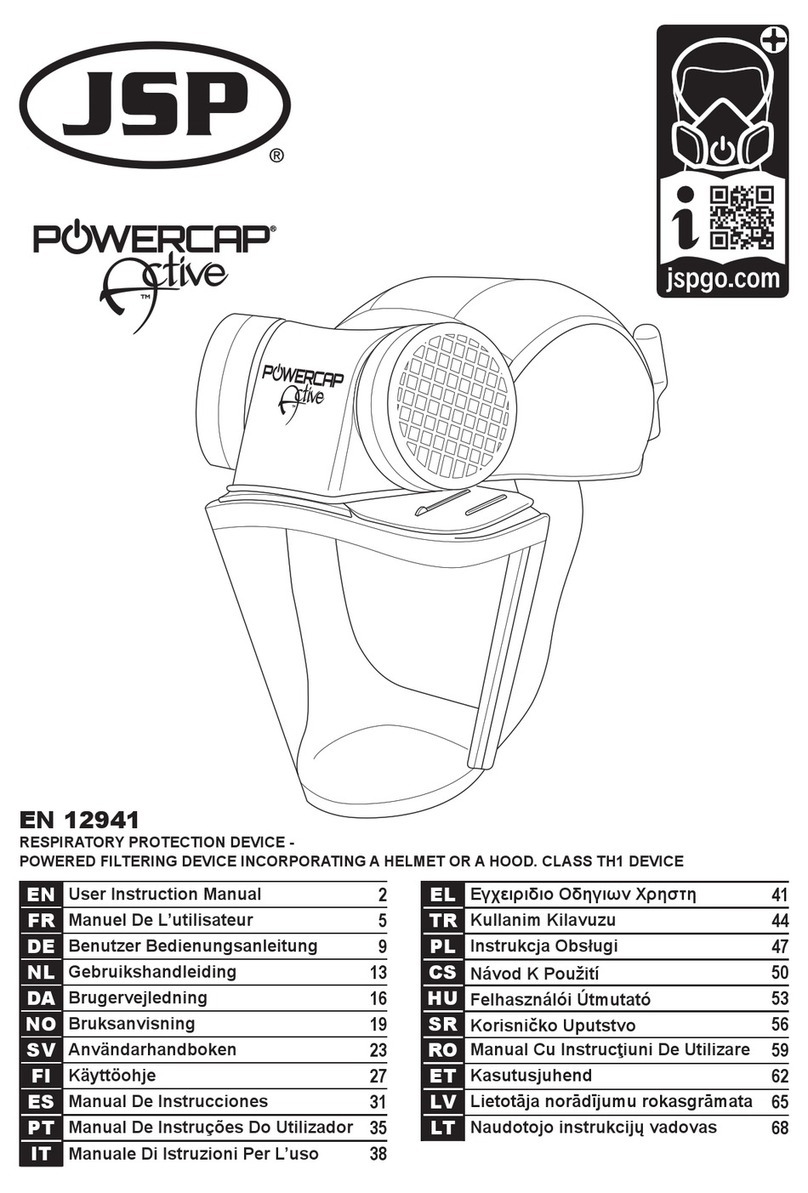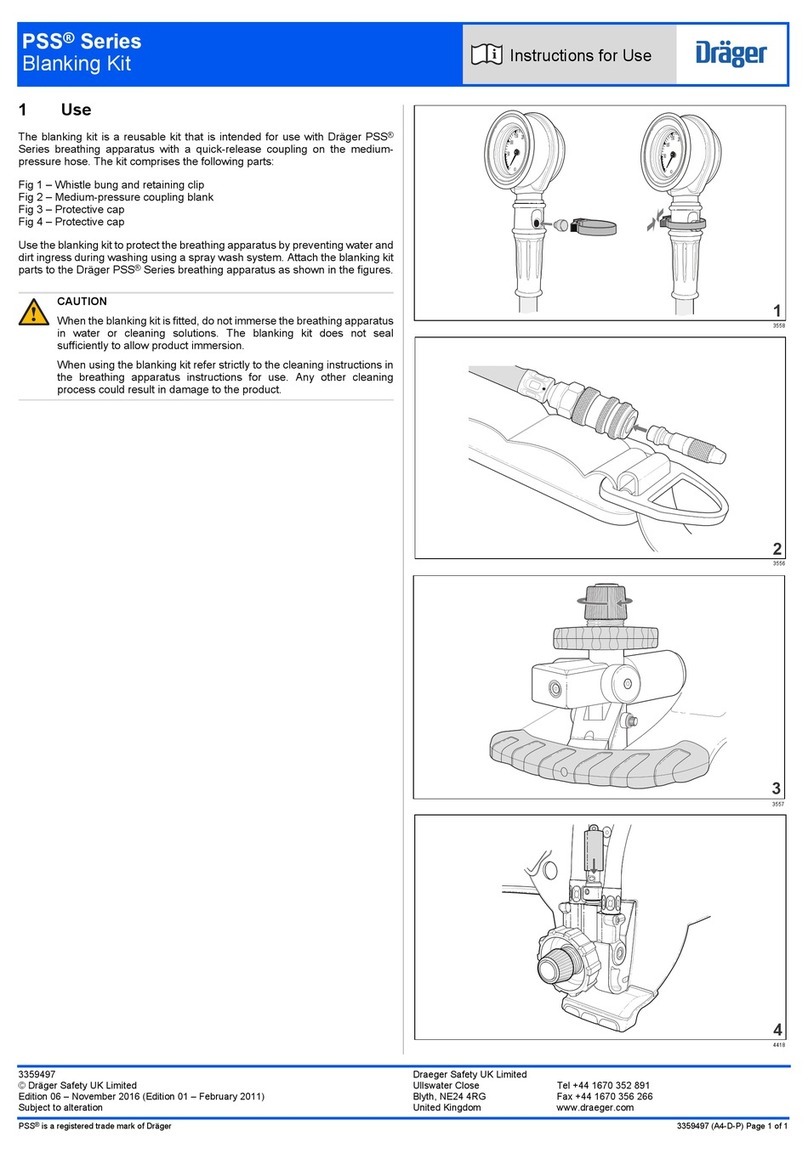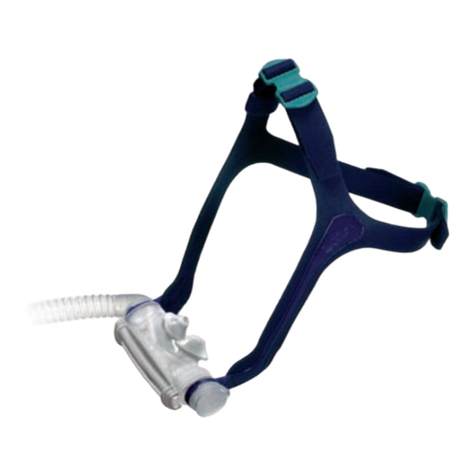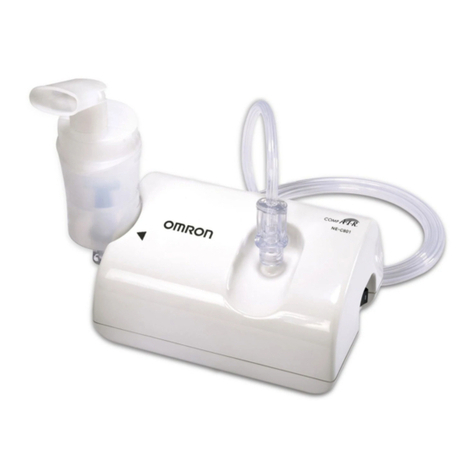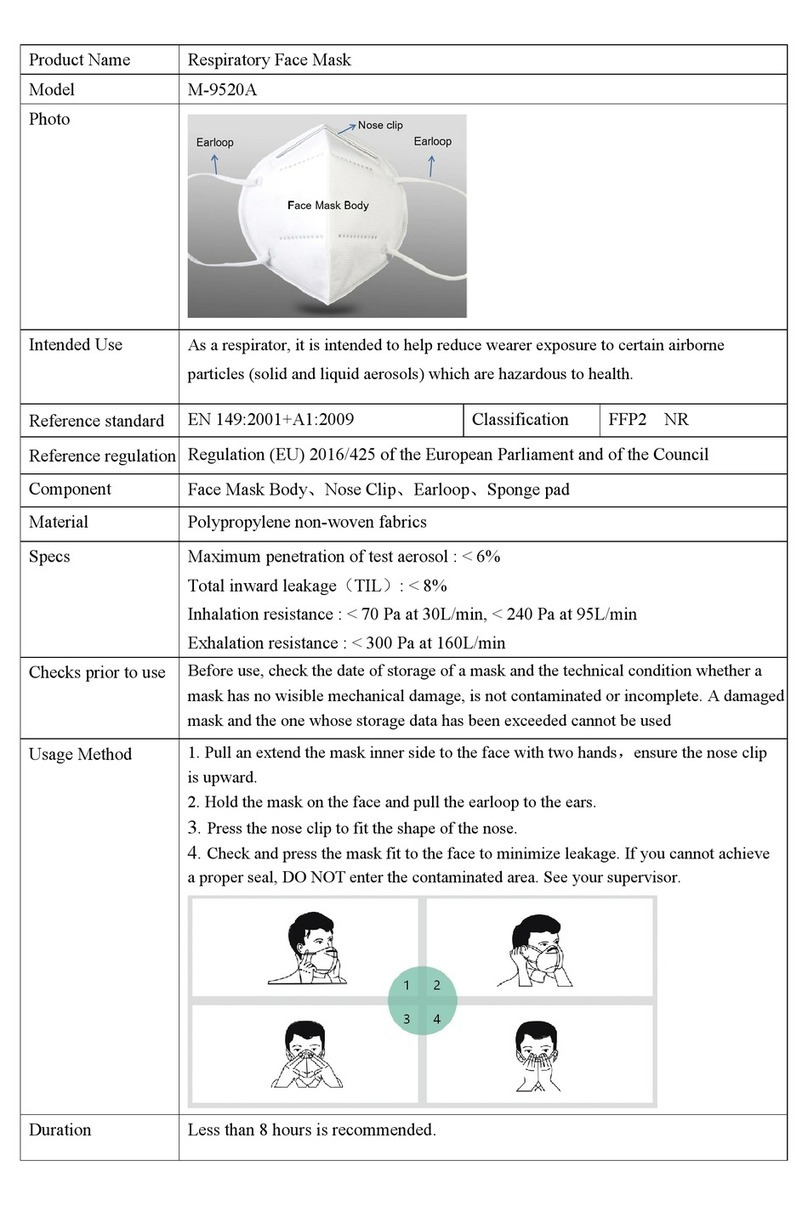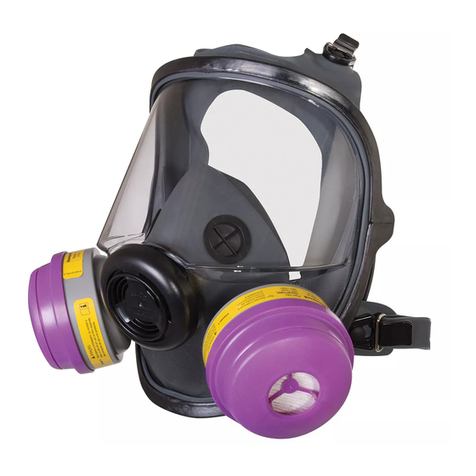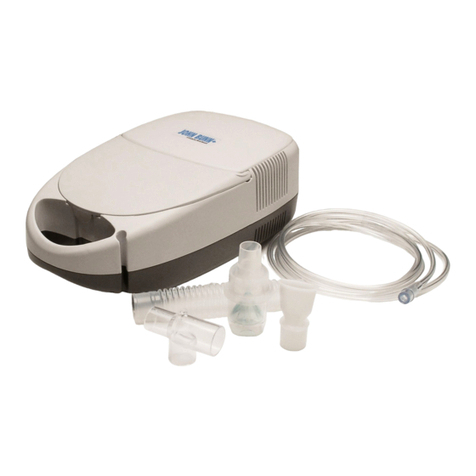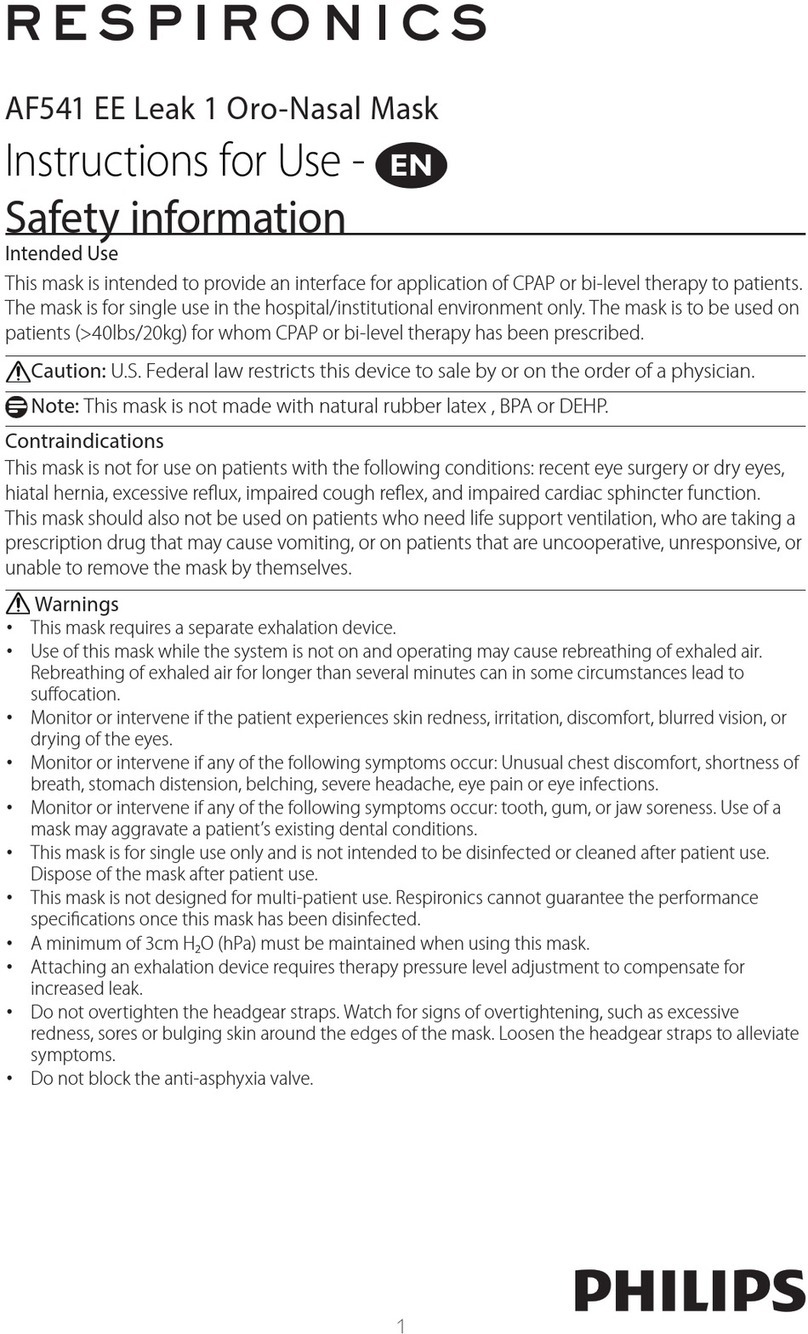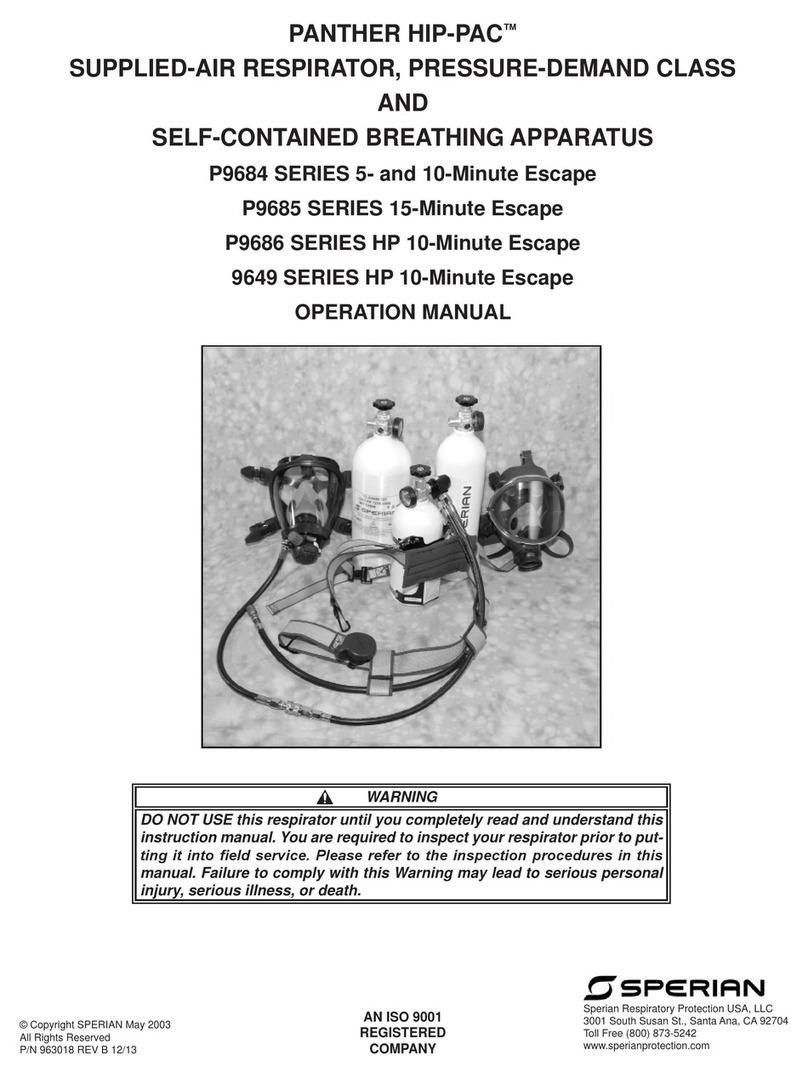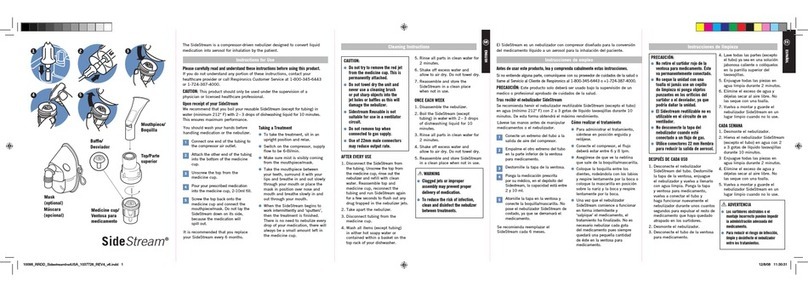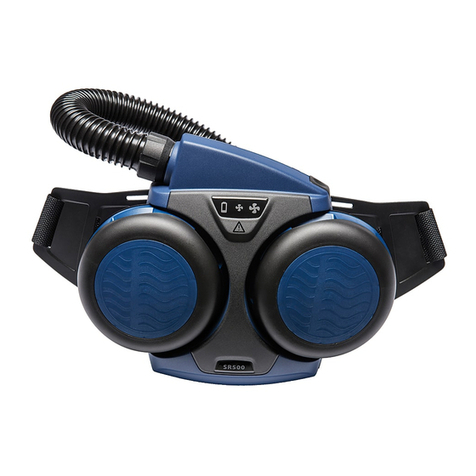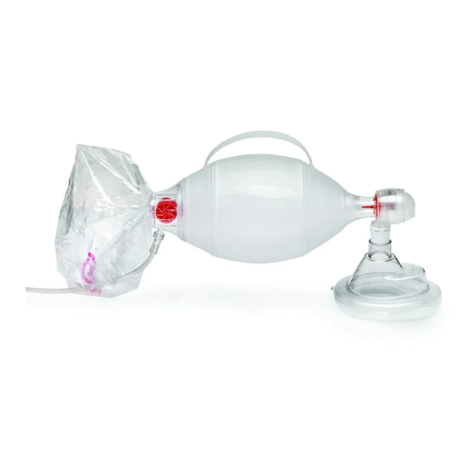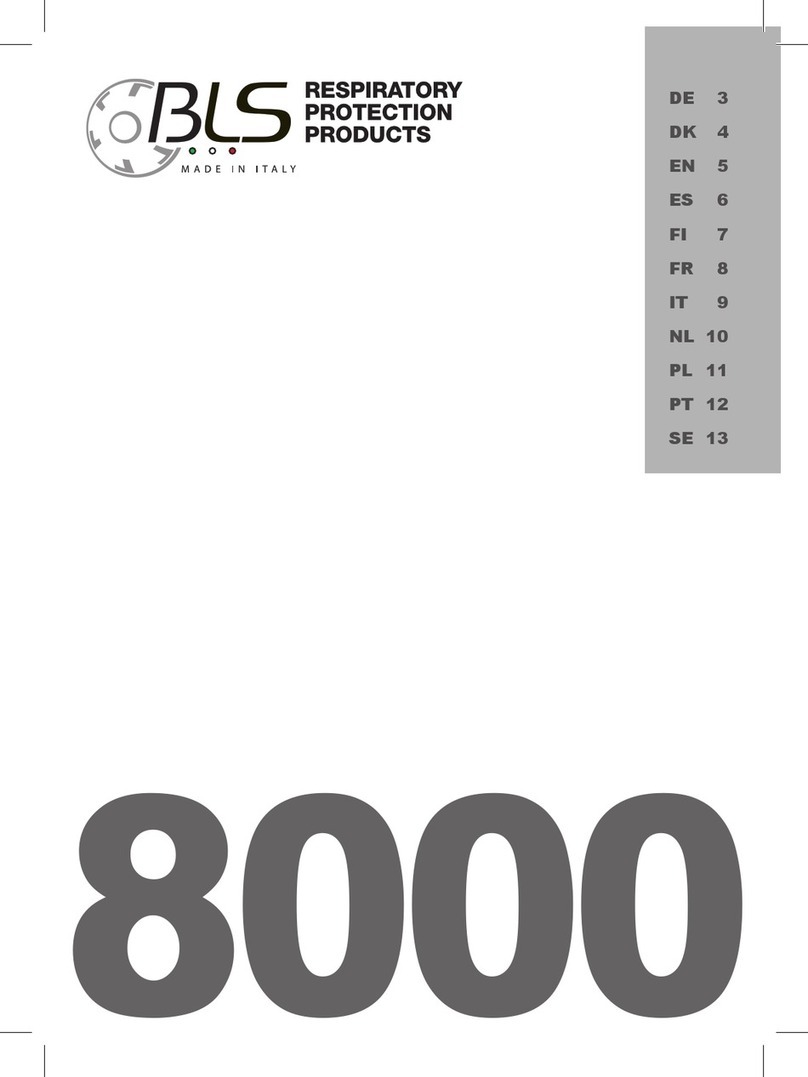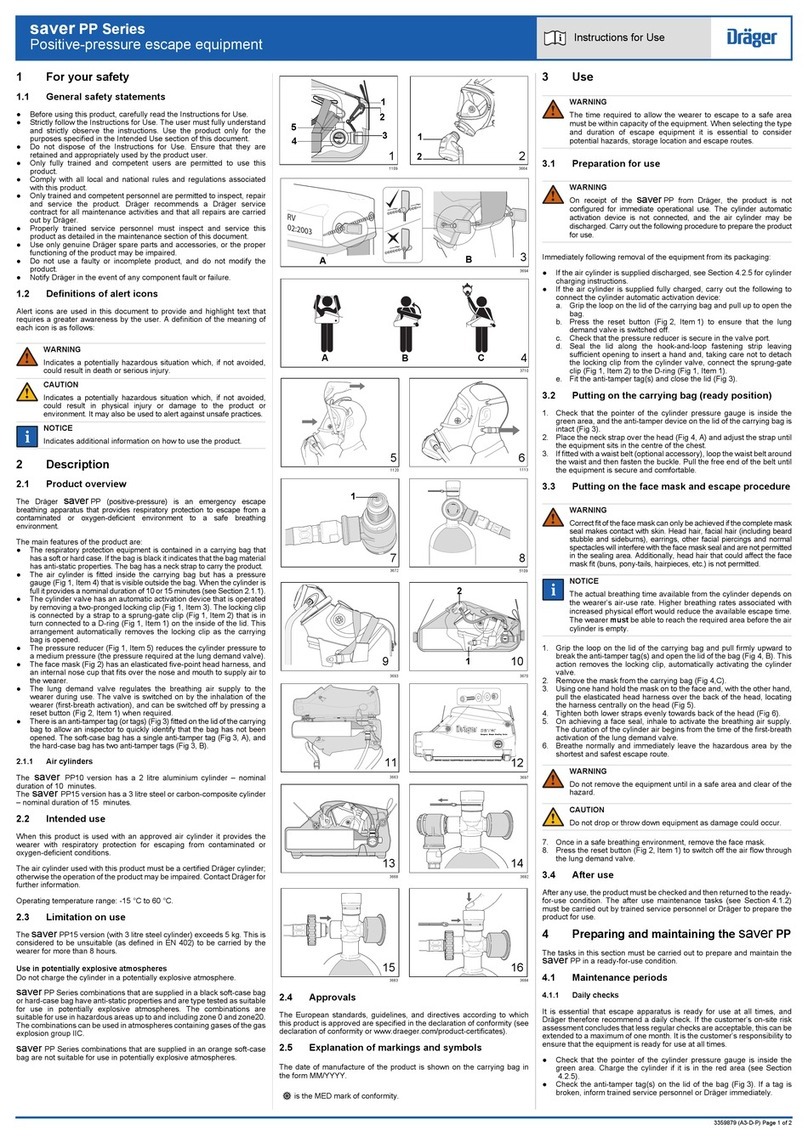
Wichtig! - Bitte lesen Sie diese Anleitung sorgfältig durch, bevor Sie Ihr Jetstream-Produkt auspacken.
Nichtbefolgung der Anleitungen in dieser Broschüre könnte die Garantie Ihres Produkts gefährden und Auswirkungen
auf Ihre Gesundheit haben. Sollten Sie irgendwelche Fragen zur Eignung des Produktes für Ihre spezielle Aufgabe
haben, wenden Sie sich bitte an einen Hygieniker oder an den technischen Informationsdienst des Herstellers.
Sie finden Adresse und Telefonnummer auf der Rückseite dieser Broschüre.
Auspacken - Ihr motorbetriebenes Atemschutzgerät von Jetstream sollte folgende Teile enthalten:
a) Gebläse-Einheit b) Gurt c) Kopfhaube mit Schlauch d) Luftstrom-Testeinheit e) Batterie Ladegerät
f) Anleitung g) Filter (Filtertyp ist von Modell abhängig)
Sollte Ihrem Bausatz einer der obigen Einzelteile fehlen, wenden Sie sich bitte sofort an Ihre Lieferfirma.
Zulassungen - Jetstream - Design und Herstellung von Jetstream entsprechen, gemäß EN12941: 1988 dem Standard
eines TH2 Geräts. Nach BS4275, einer Richtschnur zur Einführung eines effektiven Programms für Atemschutzgeräte,
die der Benutzer durchlesen sollte, wird dem EN12941: 1988 TH2 Gerät der Schutzfaktor 20 zugewiesen. Jetstream
kann diesen Schutzgrad jedoch nur gewährleisten, wenn es gemeinsam mit Filtern des Herstellers benutzt wird, die als
“Jetstream” und “EN12941: 1988 TH2” bezeichnet sind. Jetstream wurde unter einem Qualitätssystem von BS EN ISO
9000 hergestellt.
Einsatzbeschränkungen - Anweisungen des entsprechenden Kopfteils. Wenn das Gebläse ausgeschalten ist, kann
kein oder wenig Atemschutz erwartet werden. Wenn das Gebläse ausgeschalten ist, kann es zu schneller Ansammlung
von Kohlendioxyd und zu Sauerstoffmangel innerhalb der Kopfmaske führen. Verwenden Sie Jetstream NICHT, wenn
das Gebläse ausgeschalten ist
Verwenden Sie Jetstream AUF KEINEN FALL in einer für die Gesundheit des Benutzers unmittelbar gefährlichen
Umgebung, einem Umfeld mit Sauerstoffgehalt von weniger als 19,5% oder unbekannten Substanzen.
Setzen Sie das Gerät NICHT Flammen und / oder Funken aus.
Verwenden Sie Jetstream NICHT in explosiver Umgebung.
Verwenden Sie Jetstream NICHT in geschlossenen Räumen mit schlechter Belüftung.
Verwenden Sie Jetstream NICHT bei starkem Wind.
Das Gerät sollte AUF KEINEN FALL geändert oder umgebaut werden.
Berühren Sie KEINE der sich bewegenden Teile.
Entfernen Sie den Batteriefachdeckel NICHT, dies wird nur vom Hersteller vorgenommen.
Es darf KEIN Wasser oder andere Flüssigkeit in die Gebläseradkammer / das Spiralgehäuse oder das Batteriefach
geraten. Es besteht die Möglichkeit, dass sich der Schlauch zur Kopfmaske während der Verwendung verfängt. Das
Gebläse sollte an der Person so angebracht werden, dass diese Möglichkeit verringert oder ausgeschalten wird. Filter
können nicht direkt an der Kopfmaske angebracht werden, und Anpassungen dieser Art sollten nicht vorgenommen
werden. Für richtigen Atemschutz wird nicht garantiert, wenn irgendein Teil der Ausrüstung umgeändert wurde. Bei
sehr hoher Arbeitsleistung kann es im Gerät bei Spitzeneinatmung zu niederem / negativem Druck kommen.
Jetstream sollte nur von kompetent ausgebildetem Personal verwendet werden.
Jetstream und Jetstream GV-X Filter sind nicht wechselseitig austauschbar.
Filter sollten nicht geändert werden, um in andere Gebläse-Einheiten zu passen.
Es wird dem Benutzer geraten, das verunreinigte Gebiet sofort zu verlassen, wenn:
- der Empfohlene Mindestluftstrom (MMDF) Warnsummer des Herstellers ertönt.
-die Atmung schwierig wird,
-Schwindel oder Unruhe auftritt,
-irgendein Teil des Systems beschädigt wurde,
-sich der Luftstrom zur Kopfmaske verringert oder stoppt,
-Verunreinigungen innerhalb der Kopfmaske gerochen oder geschmeckt werden.
Es ist gemeinhin nicht bekannt, dass Stoffe, die mit der Haut des Benutzers in Berührung kommen, allergische
Reaktionen verursachen, wenn es jedoch zu einer Reaktion kommen sollte, dann wird dem Benutzer geraten, das
verunreinigte Gebiet sofort zu verlassen und medizinischen Rat zu suchen.
Systemüberblick - Jetstream
Jetstream ist ein gurtmontiertes, motorbetriebenes Atemschutzgerät mit austauschbarem, hochwirksamem
Teilchenfilter-System, das nach Verwendung entsorgt werden kann. Jetstream enthält ein 8 Stunden anhaltendes
wiederaufladbares Akkupack.Jetstream warnt den Benutzer, wenn ein MMDF von 140 Liter pro Minute erreicht ist.
Der Plisseefilter wurde speziell für diese Einheit entwickelt. Er dient dazu, die Luft zu filtern, die der Benutzer einatmet.
Der Filter sollte entsorgt werden, sobald er so verschmutzt ist, dass er das Warnsignal auslöst.
